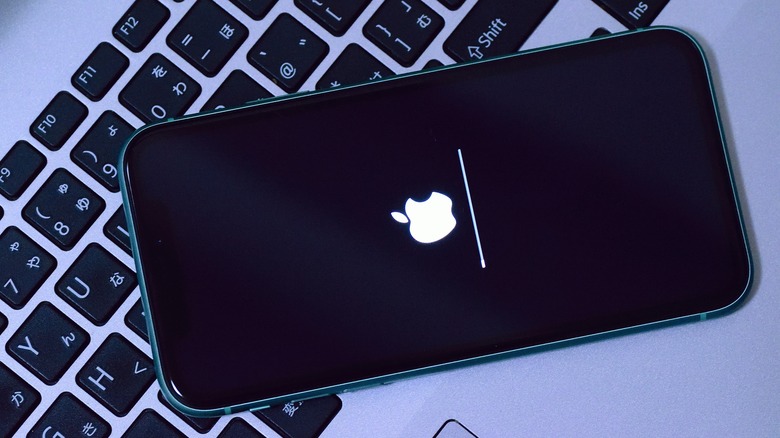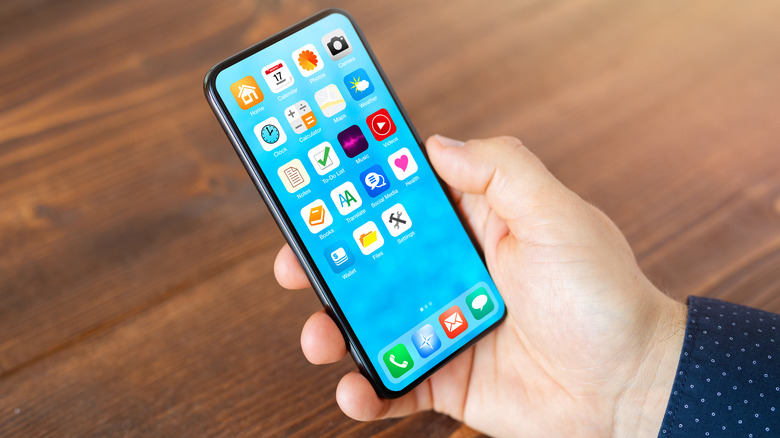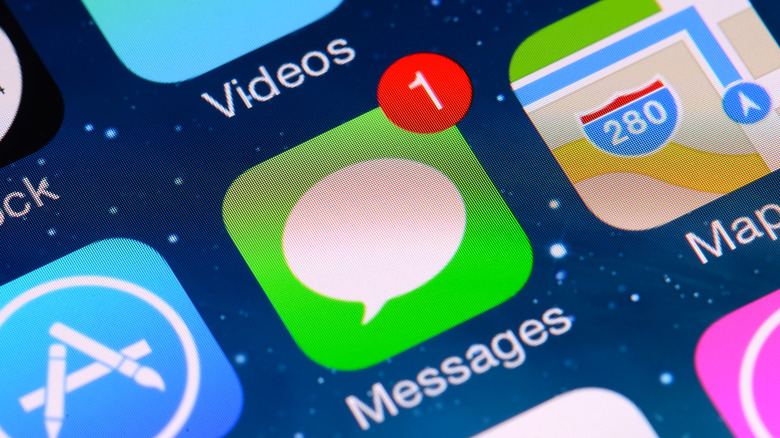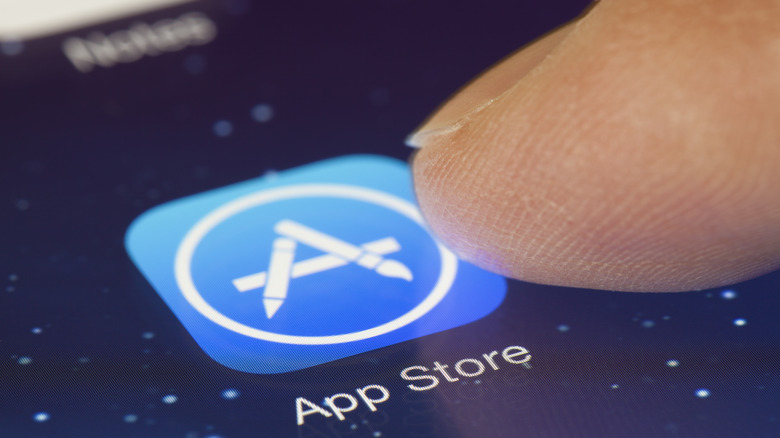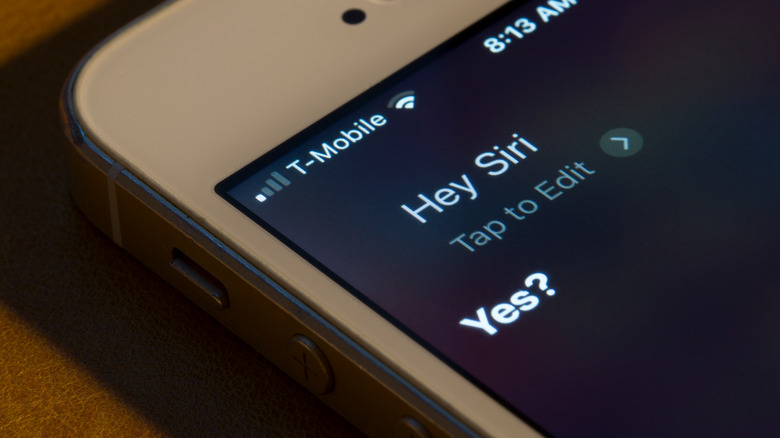Features We Wish Apple Would Have Added In iOS 17 (But Didn't)
Apple recently announced the upcoming iOS 17 at its Worldwide Developers Conference 2023. Among other things, it also announced the Apple Vision Pro, its new AR headset called Apple Vision Pro, the new Mac Pro, and more. In its announcement, it was revealed that iOS 17 would receive features such as a Journal app and upgrades to communications apps such as Facetime, Phone, and Message to allow video voicemail, message transcription, contact cards, and more. It also announced features such as adaptive audio and visual lookup, which should be welcome improvements to the user experience.
While there were definitely a host of very interesting upgrades over iOS 16, at the end of the day, iOS 17 did not end up being as big of an update to, or a departure from, its predecessors as it could have been. Reports had also said that Apple could include some highly-requested features in the update. All of this left many users somewhat disappointed that some features that could have greatly improved the quality of their user experience had been left out. It is worth noting that iOS 17 has not been released yet and has only been released to some developers as a beta, so there could still be changes by the time it actually comes out.
Updated UI/UX
Aside from relatively minor tweaks here and there — such as the introduction of the Dynamic Island, which is iPhone 14 Pro-specific, or the changes to the Control Center in 2017 — the overall user interface and user experience of iOS have been largely unchanged for a decade.
While a complete overhaul of the UI would definitely be overkill, after 10 years of more or less the same thing, a significant number of users would have probably appreciated a design refresh. Beyond this, the addition of functionality such as the personalization of app and icon placements would have also improved the user experience, allowing us to navigate to and from our most-used apps more efficiently. iOS 17's handling of app notifications also leaves something to be desired, with everyone quite tired of the cascade of notifications that often fill the Notification Center.
This need for improved UX design also extends to the ability to multitask. iOS 17 still only lets you have one app on screen at a time, forcing you to switch between apps if you want the services of more than one. While this isn't too difficult, it is definitely an impediment when you need to multitask. What makes all of these issues that much more frustrating is the fact that Android solved them years ago by allowing multitasking, including multiple UI themes and responsive icons that change to match your phone's theme, more intuitive notifications, and more.
RCS support
Although Rich Communication Services, the successor to the SMS protocol, has been in use since the late 2010s across Android devices, Apple has staunchly refused to integrate it into iMessage. This is what is fundamentally behind what is known as the "green bubble phenomenon," where iMessage displays messages from users of other platforms in a green text bubble, as opposed to the standard blue.
While the creation of this status symbol has led to arguably unhealthy social pressures, especially amongst young people, Apple's lack of RCS support has other, more concrete impacts on the user experience as well. Because it defaults to SMS/MMS for non-iMessage users, those users are locked out of features available to iMessage users, such as high-resolution image sharing, the ability to edit messages (and very importantly, see the updated versions of other people's messages) and the ability to leave an iMessage group chat. As much as Apple would like every consumer to switch to an iPhone (and this mechanism may actually be working), as long as people have contacts using Android, both parties will have a sub-par messaging experience.
In addition to the benefits of being able to text our friends within iMessage without any hitches, the RCS protocol also brings benefits such as 1 to 1 encryption of chats, which could have been quite the selling point for Apple, which has recently made many privacy-focused changes to iOS.
Sideloading
Since its inception, the App Store has been the only place iOS users can go to download new apps. Apple has maintained for years that it cannot allow sideloading — the installation of apps from third-party sources — because the practice would negatively impact user security and trustworthiness, but pressure from multiple areas has been growing. For instance, the EU has charged Apple for its anti-competitive actions via its App Store before, and in 2022 forced it to adopt USB-C over Lightning. More recently, it has been looking at whether Apple's continued refusal to allow sideloading also constitutes anti-competitive practices. While Apple hasn't committed to allowing sideloading, it is hard to imagine not complying with the EU's directives. On top of that, there have been indications from Apple leadership, such as Vice President of Software Engineering Craig Federighi, that sideloading could be integrated in the future, even though it wasn't announced as a feature of iOS 17.
Sideloading could be a boon to iOS users because it would significantly widen the selection of apps on offer, as developers would no longer have to agree to Apple's commission requirements and other such restrictions to make apps for iOS users. Whether or not you choose to download apps from other sources, having the option would always be better than not having it at all, and taking the pressure from the EU into account, many had been hoping for an announcement, though it didn't end up happening.
AI improvements to Siri
When it comes to versatility and the ability to respond to prompts and tasks accurately and efficiently, Siri has often found itself lagging behind Google Assistant, especially when compared to Assistant's implementation in the Pixel lineup. The iOS 17 announcement did include two improvements to Siri: the ability to give back-to-back commands without using the "Hey Siri" command and removing the "Hey" altogether, allowing users to wake up their phones and activate Siri by name alone.
However, while these upgrades will surely improve the user experience when using Siri, they won't be very effective until Siri's functionality improves, especially when responding to queries and helping draft text. Google Assistant is already known for being better at providing answers to queries by pulling information from the internet, while Siri often sends users to the site Assistant would have referenced.
One solution some commentators have proposed is the integration of AI such as ChatGPT to improve Siri's performance as a search tool and also to provide intelligent predictive text, similar to what Google has now rolled out in Google Chat, having already been present in Gmail and Google Docs. The inclusion of the feature in GBoard for the past three years also makes its absence from iOS 17 that much more apparent.
